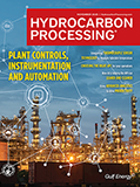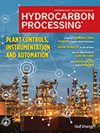RFCCU revamp to improve main fractionator gascon column performance and minimize propylene losses to refinery offgas
This article will discuss the critical parameters that could potentially affect the performance of a residue fluid catalytic cracking plant’s main fractionator and gas concentration (gascon) section columns. It will also elaborate on how the systematic troubleshooting methodology helped to solve the problems and improve column performance.
Sulzer Chemtech Middle East W.L.L.:
Kale, V.
IP: 10.9.195.137
This is a preview of our premium content. Thank you for your interest—please
log in or
subscribe to read the full article.
The Authors
V. Rajaretnam - ADNOC Refining, Abu Dhabi, United Arab Emirates
Vijayaraghavan Rajaretnam is a Senior Process Engineering Expert at ADNOC Refining. He has more than 20 yr of experience. Rajaretnam specializes in simulation, feasibility studies, pre-FEED, FEED and project management, covering all stages from feasibility to commissioning of refinery units. He earned an MTech degree from NIT, Trichy, India, and is also a certified Project Management Professional (PMP).
V. S. Thamizhan - ADNOC Refining, Abu Dhabi, United Arab Emirates
Velavan S. Thamizhan is a Lead Technical Specialist at ADNOC Refining. He has more than 20 yr of expertise, primarily in heavy oil conversion and its downstream technologies (FCC, RFCC, ARDS and olefins). He is currently Team leader for the residue conversion team responsible for providing technical services to the RFCC, ARDS, olefins and alkylation complex of the Ruwais refinery. He earned a BTech degree in chemical engineering from NIT, Trichy, India. He is also a member of the IchemE and is a certified PMP.
A. M. Al-Suwaidi - ADNOC Refining, Abu Dhabi, United Arab Emirates
Abdulla Mohammed Al-Suwaidi is a Process Engineering Manager at ADNOC Refining. He has more than 20 yr of expertise, with a wide range of experience in plant operations, process engineering, troubleshooting and project management of refinery process plants, covering crude distillation to utilities. He earned a BS degree in chemical engineering from Washington State University.
G. Mosca - Sulzer Italy SrL, Milan, Italy
Giuseppe Mosca is a Global Technical Expert and Head of Engineering Solutions at Sulzer Chemtech. He is involved with process simulations, revamping proposals, troubleshooting, commissioning and start up assistance of fractionation equipment. He is the author and co-author of more than 50 papers published at international conferences and in magazines. Mosca received a MS degree in chemical engineering from the University La Sapienza in Rome, Italy. He is a registered professional engineer of the district of L’Aquila, Italy, and a senior member of AIChE.
U. Bhagwat - Sulzer India Pvt. Ltd., Pune, India
Unmesh Bhagwat is a Chemical Engineer. He has 20 yr of experience in refining applications and process engineering. His experience includes process simulation, hydraulic calculations, revamps and troubleshooting of distillation columns, sizing of column internals, trays, packings and distributors, etc.
Kale, V. - Sulzer Chemtech Middle East W.L.L., Manama, Bahrain
Vinit Kale is Head of the Sales downstream business at Sulzer Chemtech and has 18 yr of experience in refinery, petrochemical and specialty chemical processing. He holds a BS degree in chemical engineering from India and has published five technical papers.
Related Articles
From the Archive












Comments